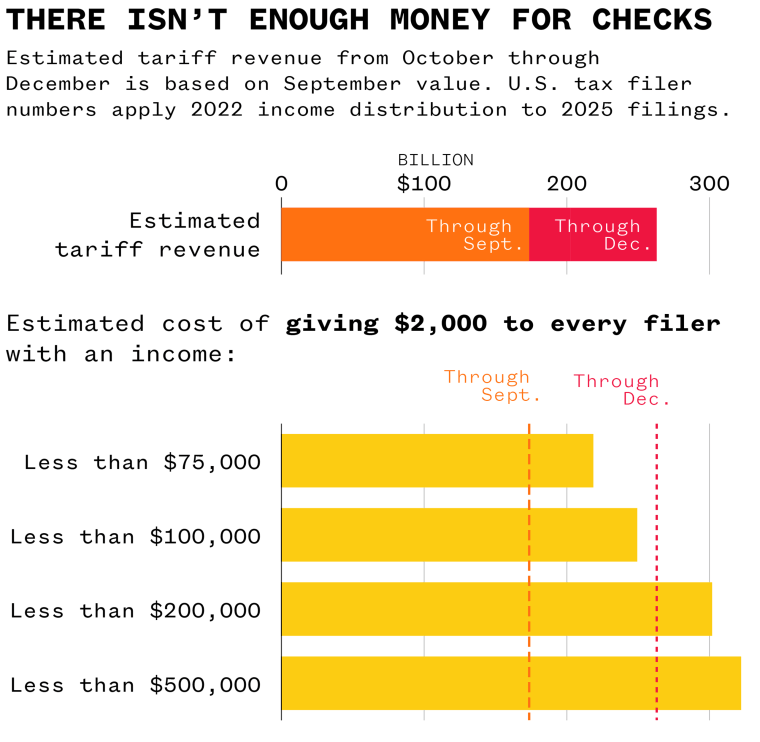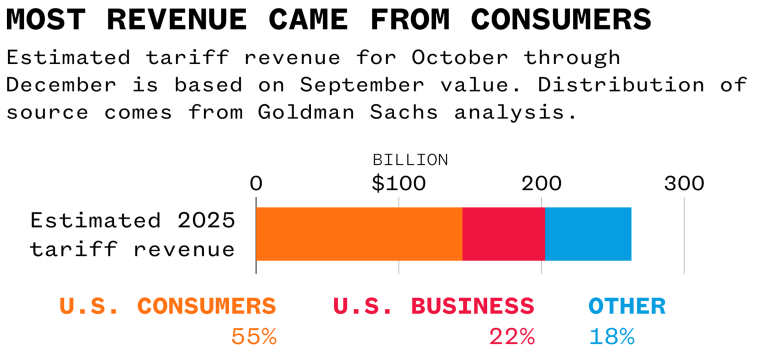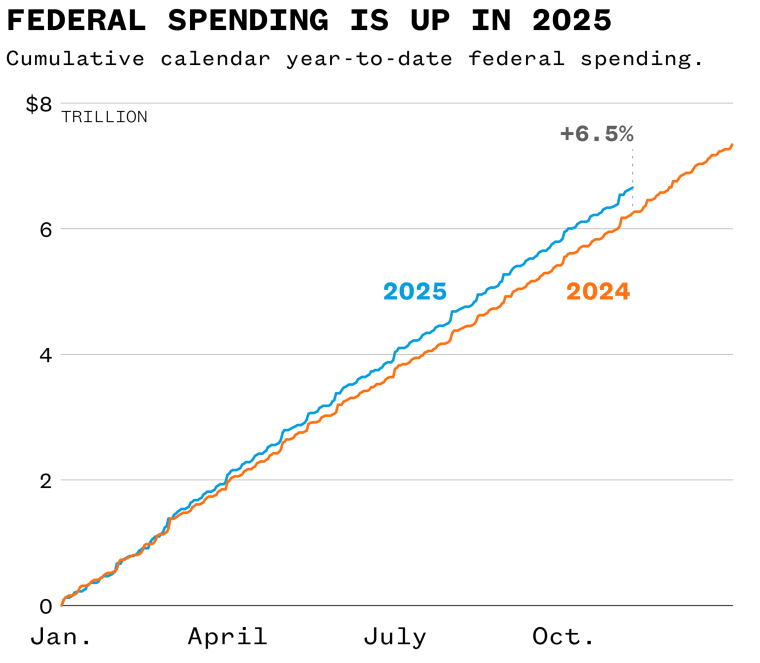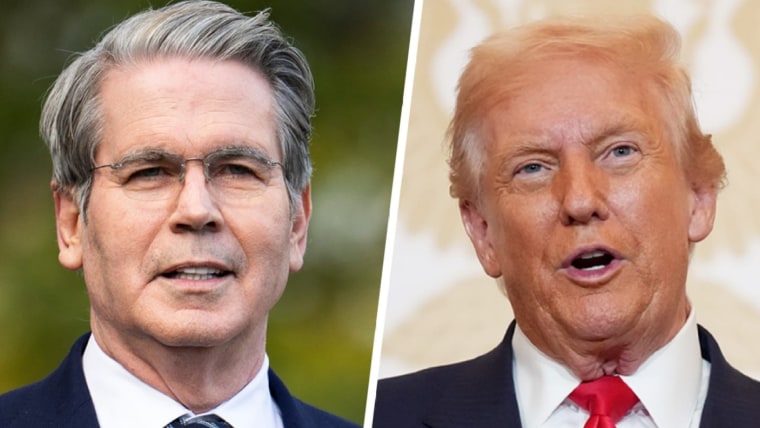By default, one should not take promises made by President Donald Trump at face value.
The past decade is littered with the husks of things Trump said he’d deliver to Americans and then didn’t. A flawless health care system. Sweeping tax cuts. Cheaper groceries. Gas at $2 a gallon. Treatments for the coronavirus. Trump spent decades pushing real estate in New York City, where he learned to say whatever the customer wanted to hear. It’s an approach that’s worked surprisingly well for him in politics, too.
It’s worth keeping that history in mind when considering Trump’s latest pledge: that Americans can expect checks for $2,000. This largesse, he wrote on his social media platform, would be siphoned off from the “massive Tariff Income pouring into our Country from foreign countries” and given to “low and middle income USA Citizens.”
There’s just a little problem: The numbers don’t add up.
Sounds good, which is the point. There’s just a little problem: The numbers don’t add up.
Actually, there’s another problem that bears mentioning: The White House isn’t empowered to take in tax revenue and redistribute it as it sees fit, according to a document you might have heard of called the Constitution. But for the sake of argument, let’s stipulate that Trump has the ability to do this, presuming that either Congress approves it (possible) or Congress doesn’t bother preventing him from doing so (even more possible).
To figure out whether $2,000 checks can be sent even with that stipulation, we need to know, one, how much revenue the tariffs have generated and, two, how many people should receive checks.
The first number is fairly easy to determine. The Committee for a Responsible Federal Budget estimates that tariffs raised about $174 billion from January through September. If we presume an additional $89 billion through the end of the year (given that just less than $30 billion was raised in both August and September), we get to about $263 billion by Dec. 31.
So how many checks would be needed? Well, it depends on how Trump (or whoever) defines “low and middle income.” But given the distribution of incomes in the U.S., the definition would have to be fairly low in order to work with the year-end number — and very low to work with the amount that’s actually in hand.
The IRS collects data on the number of income tax filers over the course of the year, so we know that about 163.6 million people have filed in 2025. We also know roughly how incomes are distributed across those filings, though 2022 is the most recent year for which that data is available. Applying that distribution to the current number of filers, we learn that there are about 109 million filers who reported income under $75,000 and about 151 million who reported earning less than $200,000.
This means that Trump’s check distribution plan would require $218.6 billion to cover those earning less than $75,000, or $301.8 billion for those earning less than $200,000. The U.S. median income in 2024, by the way, was about $84,000. That suggests that the “low and middle income” line might be drawn at about $100,000 in income, requiring $249 billion — far more than has been taken in and almost all of what might be received by year’s end.

There’s an important caveat to all this, by the way: Most of that money came from American consumers in the first place.
Analysis from Goldman Sachs estimates that by year’s end, about 55% of revenue from tariffs will have been generated by consumers paying more for imported goods. An additional 22% will have come from U.S. businesses absorbing some of the costs. What Trump is proposing, in other words, is that Americans be sent checks that consist primarily of money taken from other Americans.

Of course, this is already the second time this year the Trump administration has floated the idea of sending out hefty checks to Americans. The first time it did so was at the height of the Elon Musk-led “efficiency” initiative, when the carmaker-turned-presidential adviser was trumpeting the trillions he would slash from government spending. Back then, the idea was that Americans might get as much as $5,000 — which you will probably notice you have not received.
That’s in part because government spending is actually up more than 6% relative to the same point last year, according to Brookings Institution data. Instead of getting tax money back, Americans would at some point be on the hook for the tax revenue needed to make up the increase.

The website for the so-called Department of Government Efficiency (DOGE) continues to insist that it is responsible for $214 billion in savings, or about $1,300 per taxpayer. Setting aside the dubious history of that top-line estimate (and its ongoing uncertainty), no one is still pretending that we’re all about to get $1,300 checks in the mail.
Trump is trying to generate support by suggesting that the revenue will benefit Americans directly — while overstating the potential benefit and ignoring that Americans are the source of most of the money in the first place.
Why, given how far from the mark his team was at the outset, did Musk raise the idea at all? Because DOGE was being heavily criticized for blindly cutting programs and staff without considering the ramifications. It was a public relations move, a way to rally Americans as giant dollar signs popped out of their eyeballs, Looney Tunes-style.
That’s what Trump is doing with tariff revenue, too. Tariffs are raising money by raising costs and are viewed negatively by the public. Trump is trying to generate support by suggesting that the revenue will benefit Americans directly — while overstating the potential benefit and ignoring that Americans are the source of most of the money in the first place.
Trump’s trying to do something else here, too: put public pressure on the Supreme Court not to side with lower courts in finding that he doesn’t have the authority to impose tariffs. From the outset, his approach to politics has been to put himself and his supporters against everyone else. Framing the Supreme Court as the barrier between Joe Patriot and two grand does precisely that.
At some point, one would think Mr. Patriot would realize that it’s the people who are skeptical of Trump’s promises who keep being proved right.
